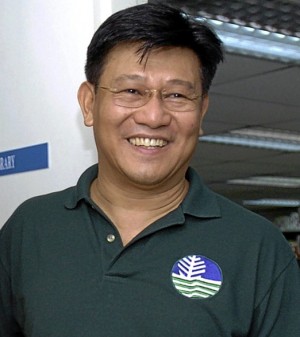Most Filipinos are without proper sewerage—Paje
MANILA, Philippines—Millions of Filipino households are still not connected to piped sewerage, Environment Secretary Ramon Paje said Tuesday as he urged local governments to put up their own sanitation and wastewater treatment facilities.
“Sadly, over 20 million Filipinos still have no access to proper sanitation, and only less than 10 percent of the population is actually connected to piped sewerage,” he said in a news release.
As a result, tons of human waste end up in natural waterways, and toxic sludge coming from septic tanks reach the rivers, Paje said.
Government agencies tasked to implement the National Sewerage and Septage Management Program are working double time to increase the reach of sewage and sanitation services, he said.
Approved in June 2012, the program seeks to improve water quality and public health in the Philippines by 2020 by improving the ability of local facilities to build and operate effective wastewater treatment systems.
The Department of Environment and Natural Resources recently hosted a meeting that brought together all other national agencies involved in the program, including the Departments of Public Works and Highways, and of Health; local governments; water districts and concessionaires, and funding institutions.
Paje said the meeting was called to update one another on the status of the implementation of sewage management program, whose formulation was mandated by the Philippine Clean Water Act of 2004.
Under the law, all subdivisions and condominiums, commercial establishments, hotels, hospitals, public markets and government buildings should have already been connected to the sewerage system by 2010.
“Unfortunately, as of 2010, only 30 percent of these areas had sewer coverage due to limitations in the sewerage network itself,” Paje pointed out.
“However, we are making resolute and palpable progress, and we hope to achieve 100 percent sewer coverage by 2018 provided we make the right investments,” he added.
One such investment is the establishment of more joint sewage-septage treatment plants similar to the one at Veterans Village in Project 7, Quezon City.
Scheduled to be inaugurated on Oct. 17, that plant can treat 2,400 cubic meters of sewage generated daily by residents and 240 cubic meters of septage from nearby areas.
Paje also cited the low-cost, small-scale wastewater treatment facility put up by the city government of Muntinlupa in its public market that cleans 210 cubic meters of sewage in a day, and allows the recycling of treated wastewater for cleaning and flushing purposes.
The environment chief lamented that the country continued to lag behind other nations when it came to sewerage and sanitation.
A 2009 study by the Asian Development Bank revealed that 58 percent of the country’s groundwater was contaminated by infectious waste coming from unsanitary septic tanks, wastewater discharge from industries, and runoffs from agricultural fields and dumps, the DENR said.
Such contamination has been found to have caused the “death” of major water bodies – rivers unable to sustain aquatic life, beaches unfit for recreational activities such as swimming, and increasing incidence of waterborne diseases, it added.
Fishermen have also been venturing farther out to sea for decent catch, the DENR said.















